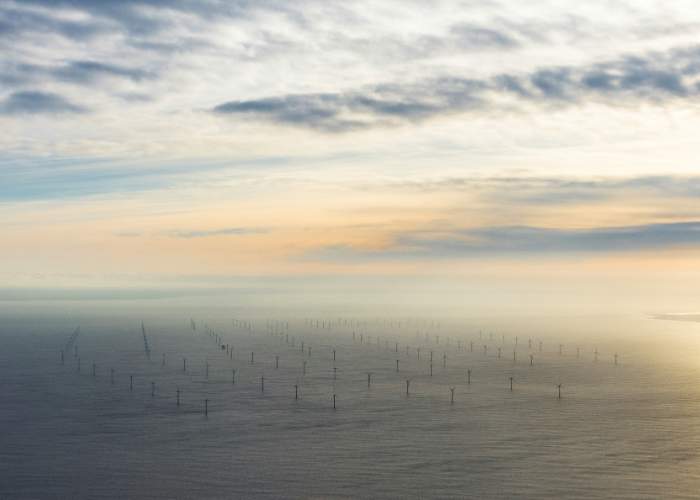Dr Juliane Wihsgott of Plymouth Marine Laboratory is using marine autonomous robotics to undertake investigations of marine ecosystem impacts that result from the growing presence of offshore wind farms in UK coastal seas.
Her work forms part of the PELAgIO project (Physics to Ecosystem Level Assessment of Impacts of Offshore Windfarms).
The UK has committed to dramatically increase offshore wind: from current capacity of around 15GW, to 50GW by 2030 to meet its national and international NetZero targets, and to enhance future UK energy security. She describes the critical need for research:
“It is imperative that we understand the impacts that such a large-scale and rapid expansion of offshore wind farms (OWFs) will have on our seas. This challenge is further complicated by an inevitable shift in offshore wind generation away from shallow, well mixed coastal waters to deeper, seasonally stratifying shelf seas that support different ecosystems.”
“Here, the seasonal thermocline separates the warm, sunlit surface layer from cool, dark and deeper water during spring and summer. This acts as a key control on the growth of phytoplankton – which form the base of the marine food web, that supports fish, seabirds and big marine mammals.”
“What’s currently unknown is how any change in ocean mixing – from the addition of infrastructure, the extraction of wind energy, and climate change – will combine and impact stratification and biogeochemical cycling with knock-on-effects to higher trophic levels, such as pelagic fish and seabirds.”
Funded by NERC and The Crown Estate as part of the ECOWind programme, PELAgIO aims to address these evidence gaps by employing a combination of novel multi-scale (0 to >100 km), multi-trophic, coupled modelling with low-carbon observing methodologies including marine autonomous platforms.”

Its first field campaign took place from May-July 2023 in the vicinity of SSE’s Seagreen OWF in the Firth of Forth. Here fine-scale, coincident data from physics to fish and seabirds were collected over multiple scales using multi-instrumented marine autonomous vehicles complemented by acoustic platforms and ship surveys.
The autonomous mission was conducted using two buoyancy driven Slocum gliders supplied by the National Marine Facility equipped with sensors collecting continuous, full-depth measurements of ocean temperature, salinity, chlorophyll fluorescence (a proxy for phytoplankton biomass), oxygen concentration and turbulence.
Dr Wihsgott added:
“Using autonomous robots has enabled us to measure high-resolution data in excess of 3-months which will help us understand changes in mixing introduced by the wind farms and associated impacts on the cycling of nutrients and primary production at local and regional scales. This will provide an estimate of the total ‘footprint’ an OWF has on the marine environment, from the microscopic to the ecosystem level scale. Using autonomous robots to make measurements at this unprecedented scale is also extremely useful in helping us build a better representation of OWFs into our ocean models. We can then use this increased understanding to better predict future physical and biological changes under different future scenarios of climate change or extreme events such a marine heatwaves coupled with the expansion of OWFs. Beyond the generation of new understanding this knowledge will also feed into streamlining future planning processes of OWF.”
PELAgIO is a consortium project led by the University of Aberdeen and funded under the NERC_TCE ECOWind programme (Award NE/X008835/1)

